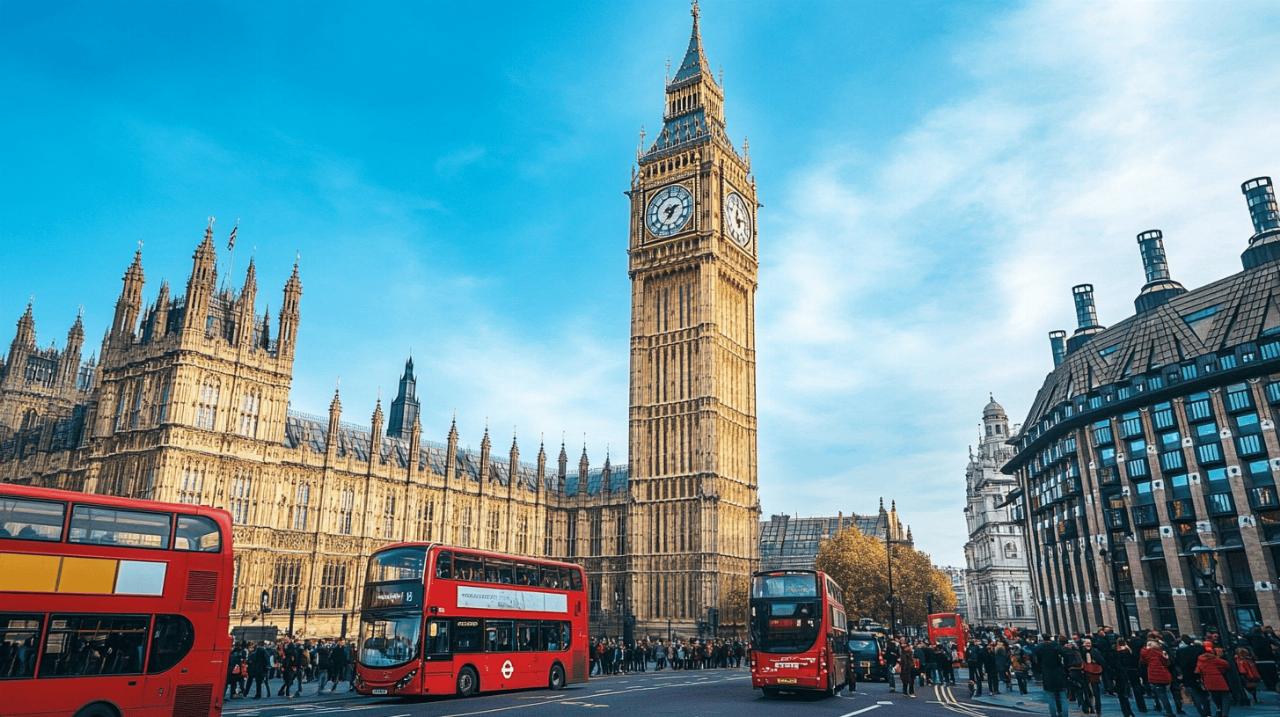The grand reopening of london's iconic landmark
After a lengthy hiatus, the unmistakable sound of Big Ben will once again reverberate through the streets of London starting early next year. The beloved clock tower, officially named the Elizabeth Tower but commonly known as Big Ben after the Great Bell housed within it, has been undergoing extensive renovations since 2017. This five-year restoration project, which has cost a staggering £80 million, marks one of the most significant refurbishments in the landmark's history since its completion in 1859.
The Historic Significance of Big Ben's Return to Service
The long-awaited return of Big Ben's distinctive chimes represents more than just the completion of a renovation project; it symbolises the resilience of one of Britain's most treasured monuments. While the restoration work was initially scheduled to be completed this year, the coronavirus pandemic caused unexpected delays. Despite these setbacks, the 13.7-tonne Great Bell has not remained completely silent throughout the renovation period. Special arrangements were made for the iconic bongs to sound on significant occasions such as Brexit and Remembrance Day, maintaining its ceremonial importance even during repairs.
What Visitors Can Expect from the Newly Restored Elizabeth Tower
When the scaffolding comes down completely by next summer, visitors will be treated to a sight not seen for generations. The clock hands have been meticulously restored to their original Victorian colour scheme, bringing an authentic historical touch to the monument. The Elizabeth Tower stands tall in London's skyline, offering a visual anchor point that has been partially obscured during the extensive restoration work. The completion of this project will allow tourists and locals alike to fully appreciate the architectural splendour of this Grade I listed building as it was originally intended to be seen.
Inside the five-year renovation project
The comprehensive restoration of the Elizabeth Tower has been far more than a simple cleaning job. The £80 million project has involved painstaking work on both the external façade and the internal mechanisms that keep this historical timepiece functioning with remarkable precision. Teams of specialist craftspeople, engineers, and conservationists have worked tirelessly to ensure that every aspect of the tower meets modern standards while preserving its Victorian character.
Major structural and mechanical improvements
At the heart of the renovation project has been the complete disassembly and repair of the Great Clock mechanism. This intricate system, which has kept time for Londoners since the mid-19th century, required expert attention after decades of continuous operation. Each component of the mechanism has been carefully examined, cleaned, and repaired where necessary. The restoration team also addressed structural concerns within the tower itself, reinforcing the building to ensure its stability for generations to come. The 13.7-tonne Great Bell, which has been bonging since 1859 with only occasional breaks for repairs, has also received much-needed attention during this comprehensive renovation.
The cutting-edge gps calibration system
While respecting the historical integrity of the clock, modern technology has been thoughtfully integrated to enhance its performance. A sophisticated GPS calibration system has been installed to ensure the Great Clock maintains perfect time. This blend of Victorian engineering and contemporary technology exemplifies the careful balance struck throughout the restoration project. The clock's mechanism has been thoroughly fettled with to guarantee reliability, while the new calibration system provides accuracy that the original designers could only have dreamed of achieving.
Exploring the elizabeth tower experience
The reopening of the Elizabeth Tower offers visitors a rare opportunity to explore one of London's most recognised landmarks from the inside. The tower experience provides insight into not only the mechanical marvel of the clock but also the architectural brilliance of the structure itself. As visitors ascend the tower, they encounter a fascinating blend of historical craftsmanship and modern conservation techniques that have preserved this national treasure.
Notable Features and Hidden Gems Within the Tower
Beyond the famous clock faces, the Elizabeth Tower contains numerous architectural and historical elements that often go unnoticed by those admiring it from the ground. The intricate stonework, decorative elements, and the engineering solutions employed in its construction all tell the story of Victorian ambition and craftsmanship. Throughout the restoration process, workers discovered previously hidden details and historical features that have now been preserved for future generations to appreciate. The tower's position within the Palace of Westminster complex makes it an integral part of Britain's parliamentary history as well as a timekeeping device.
The famous bell's latin inscription and its meaning
The Great Bell itself bears the Latin inscription 'Domine Salvam Fac Reginam Nostram Victoriam Primam', which translates to 'Lord, keep safe our Queen Victoria the First'. This inscription reflects the era in which the bell was cast and installed, during the reign of Queen Victoria. The sentiment expressed in this dedication connects visitors to the historical context of the tower's construction and serves as a reminder of the continuity of British institutions through changing times. This inscription, etched into the massive bell, has witnessed over 160 years of London's history.
Planning Your Visit to Big Ben and Surrounding Attractions
With the Elizabeth Tower reopening to visitors, planning ahead becomes essential for those wishing to experience this iconic landmark firsthand. The restoration has not only revitalised the tower itself but has also improved the visitor experience with enhanced access and information. Combining a visit to Big Ben with explorations of the surrounding Westminster area allows tourists to maximise their time in this historically significant part of London.
Best Times to Hear the Iconic Chimes
For those eager to hear the famous bongs of Big Ben, timing is everything. The Great Bell chimes on the hour, with smaller bells marking the quarter hours. The full melody played on the hour is known as the Westminster Quarters and has become one of the most recognisable clock chimes worldwide. Morning visits often provide a less crowded experience, allowing visitors to fully appreciate the acoustics of the bells as they ring out across the Thames. Special occasions throughout the year, particularly national celebrations and commemorations, often feature extended chiming sequences that showcase the full musical capability of the bells.
Combining Your Visit with Westminster Abbey and Parliament Tours
The Elizabeth Tower stands in one of London's most historically dense areas, making it ideal for combining visits to multiple attractions. Westminster Abbey, with its centuries of royal ceremonies and notable burials, stands just across Parliament Square. The Houses of Parliament, of which the Elizabeth Tower forms a part, offer their own guided tours that provide insight into Britain's democratic processes. By planning a comprehensive itinerary that includes these neighbouring sites, visitors can gain a deeper understanding of British history, governance, and architecture all within a compact geographical area along the Thames.
The remarkable craftsmanship behind the £80 million restoration
Big Ben, the beloved symbol of London, is set to resume its familiar bongs from early next year, marking the end of an extensive five-year restoration project. The £80 million refurbishment of the Elizabeth Tower has been a monumental undertaking, displaying exceptional British craftsmanship throughout. The Great Clock mechanism has been meticulously dismantled and repaired, ensuring the accuracy of this historic timepiece with modern GPS calibration. While the tower has largely remained silent since 2017, special occasions such as Brexit and Remembrance Day have seen the 13.7-tonne Great Bell temporarily return to service. The restoration project has maintained the iconic structure's 1859 heritage whilst addressing the wear and tear accumulated over more than 160 years of continuous operation.
Victorian colour scheme revival: bringing back the original splendour
A remarkable aspect of the restoration has been the revival of the Elizabeth Tower's authentic Victorian colour scheme. The clock hands will be reinstated with their original Victorian colours, representing a return to the historical design envisioned when Big Ben first began bonging in 1859. This faithful restoration required extensive research and expertise to identify the precise hues and materials that would have adorned the tower during the Victorian era. The inscription 'Domine Salvam Fac Reginam Nostram Victoriam Primam' etched on the bell connects modern visitors to this Victorian heritage. The colour revival stands as a testament to the project's commitment to historical authenticity, maintaining the tower as a proper noticeable bit of the London skyline, whilst ensuring its preservation for future generations to admire alongside neighbouring landmarks like Westminster Abbey and the Houses of Parliament.
Challenges Faced During the Pandemic and Resulting Delays
The restoration project was originally scheduled for completion this year, but faced significant setbacks when the pandemic got in the way. These unforeseen circumstances contributed to both delays and the escalation of costs to at least £80 million. The complex nature of working on such a historic structure, combined with COVID-19 restrictions, created unique challenges for the skilled craftspeople involved. Despite these obstacles, steady progress continued, with the scaffolding expected to be fully removed by next summer, revealing the tower in its full splendour once again. Throughout the renovation period, an electric mechanism was employed to keep time ticking over for Londoners. The project team's perseverance during these difficult circumstances demonstrates the British dedication to preserving our architectural heritage, ensuring the tower's height in metres remains a distinctive feature of London's famous skyline for generations to come.







